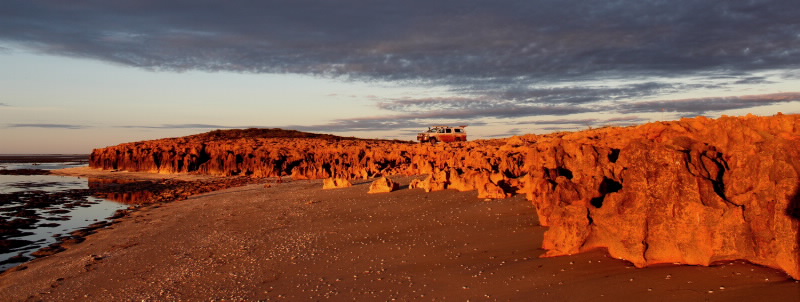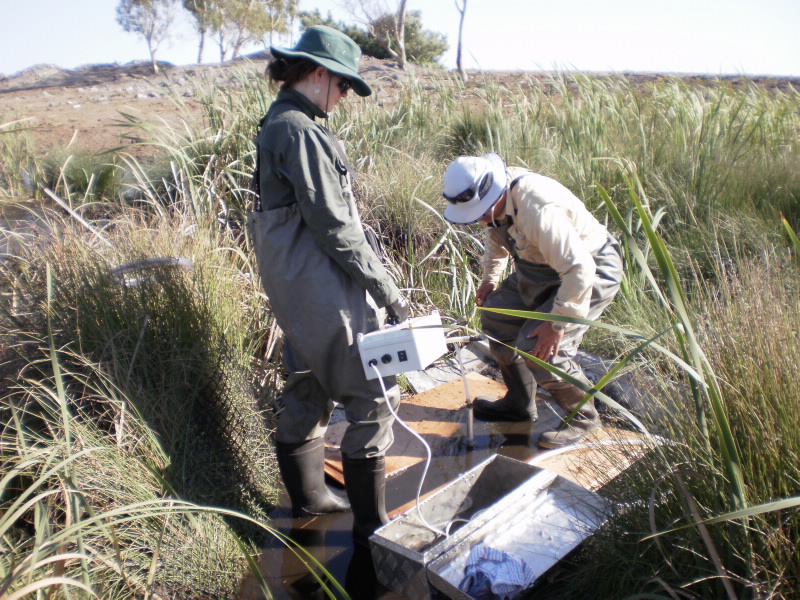Groundwater is the most abundant fresh water resource in the world. In fact, approximately 98% of the earth’s fresh water is groundwater. The rest is surface water and comes from rivers, lakes, and streams.
 |
Pilbara coastline
Photo: Eliza Wells |
Due to its underground location, groundwater can only be accessed by drilling. Groundwater resources are important for residential and industrial water supplies as well as for use in crop irrigation.
 |
| Groundwater sampling in the Pilbara |
Dr Karina Meredith from ANSTO’s Institute for Environmental Research, who has led research into the groundwater reserves in the Pilbara W.A, says that groundwater is the majority source of water in Western Australia, and new potential groundwater resources are being sought by the government, particularly where surface water is scarce.
“Groundwater resources are sometimes the only source of water available for use in arid-zone environments. Protecting and understanding it is essential for future generations who will come to rely more heavily on it for sustainable development,” says Karina.
The remote and arid Pilbara region relies heavily on groundwater resources for industry, agriculture and domestic uses. The
West Canning Basin (WCB) covers approximately 10,000 km2 of the Pilbara and contains a large groundwater resource which is potentially significant for the region.
Its proximity to the town of Port Hedland, a major population centre and one of the biggest exporting ports in Australia, means that water is in high demand. An additional number of existing and proposed mining operations will only increase into the demand for groundwater in the future.
On behalf of the
WA Department of Water, and as part of a Royalties for Regions funded project to boost water supplies for the Pilbara Cities initiative, Karina and a team of researchers from the
Isotopes for Water Project, investigated water quality, sustainability and the age of the groundwater, to determine its viability as a future water resource to support the growth of the Pilbara’s major cities.
“A large potentially sustainable resource was verified by using nuclear techniques. The outcome of this seven year study provides a greater degree of certainty of water supply for the Pilbara,” says Karina.
 |
Pilbara coastline
Photo Karina Meredith |
Accelerator Mass Spectrometry Instruments were used to analyse radiocarbon which is an isotopes that is used to date water. Other environmental isotopes and the chemical composition of the groundwaters were analysed by Isotope Ratio Mass Spectrometry to provide information on aquifer replenishment history and whether the quality of the water is suitable for potable supply.
The use of these environmental isotopes helped us understand that the groundwater is being replenished by large rainfall events such as cyclones and also provided clues on how the rock and water has interacted over the millennia.
The information provided from the measurement of environmental isotopes is essential for understanding the water quality and sustainability of large groundwater resources such as the West Canning Basin in the Pilbara.
Published: 14/03/2014





